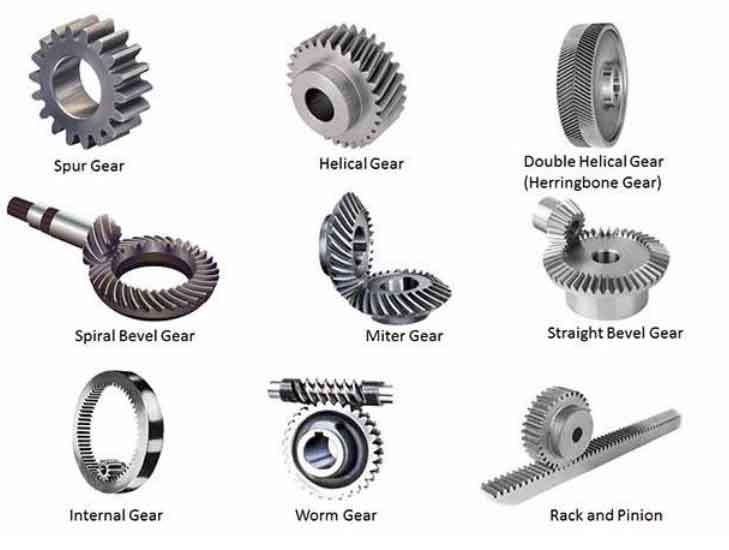Certainly! Let’s compare spur gears and spiral gears in terms of their design, advantages, disadvantages, applications, and performance characteristics.

- Design:
- Spur Gears: Spur gears have straight teeth that are parallel to the gear axis. They are the simplest type of gears and provide direct tooth-to-tooth contact, resulting in efficient power transmission.
- Spiral Gears: Spiral gears have angled teeth that are cut in a helical pattern around the gear. This helical design allows for gradual engagement of the teeth, reducing noise and vibration during operation.
- Advantages:
- Spur Gears:
- Simple design and easy to manufacture
- Efficient power transmission
- Cost-effective
- Suitable for high-speed applications
- Spiral Gears:
- Smooth and quiet operation due to gradual tooth engagement
- Increased load-carrying capacity compared to spur gears
- Better resistance to shock loads and vibration
- Improved meshing characteristics and reduced noise levels
- Spur Gears:
- Disadvantages:
- Spur Gears:
- Prone to noise and vibration, especially at high speeds
- Cannot transmit motion between non-parallel shafts
- Limited in handling heavy loads and high torque applications
- Spiral Gears:
- More complex design and manufacturing process
- Higher manufacturing costs compared to spur gears
- Slight decrease in efficiency due to increased friction from helical teeth
- Spur Gears:
- Applications:
- Spur Gears:
- Commonly used in various machinery, automobiles, electric motors, and devices where direct speed transmission is required.
- Suitable for low to moderate load applications.
- Spiral Gears:
- Widely used in heavy-duty applications where smooth operation, high load capacity, and reduced noise are essential.
- Commonly found in gearboxes, industrial machinery, automotive differentials, and power transmission systems.
- Spur Gears:
- Performance Characteristics:
- Spur Gears:
- Efficient power transmission
- Higher gear tooth strength compared to spiral gears
- Limited in handling axial loads
- Spiral Gears:
- Smoother and quieter operation
- Increased load-carrying capacity and resistance to shock loads
- Better suited for handling axial loads due to helical tooth engagement
- Spur Gears:
Spur gears and spiral gears have distinct design characteristics and advantages that make them suitable for different applications. Spur gears are simple, cost-effective, and efficient for direct speed transmission, while spiral gears excel in heavy-duty applications that require reduced noise, smooth operation, and higher load capacity. Consider the specific requirements of your system when selecting between these gear types to ensure optimal performance.
